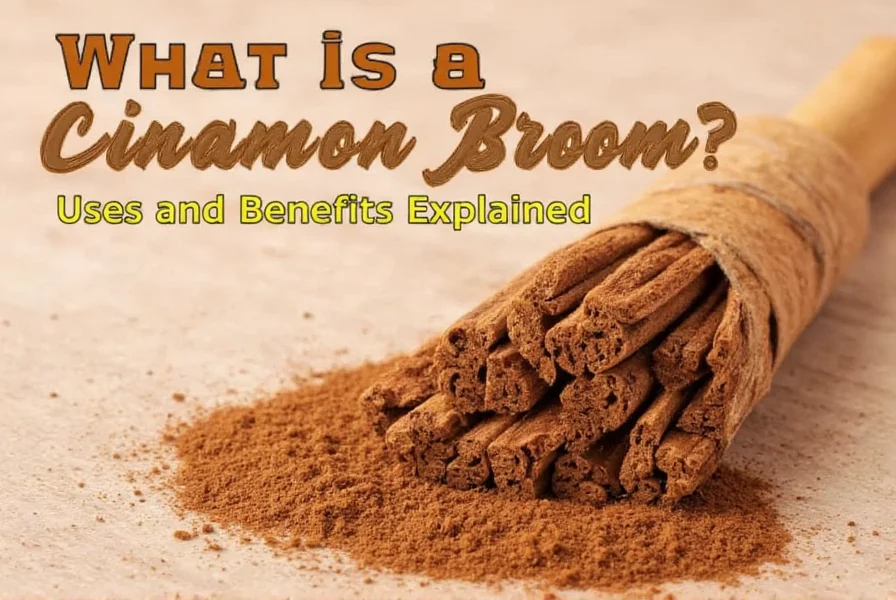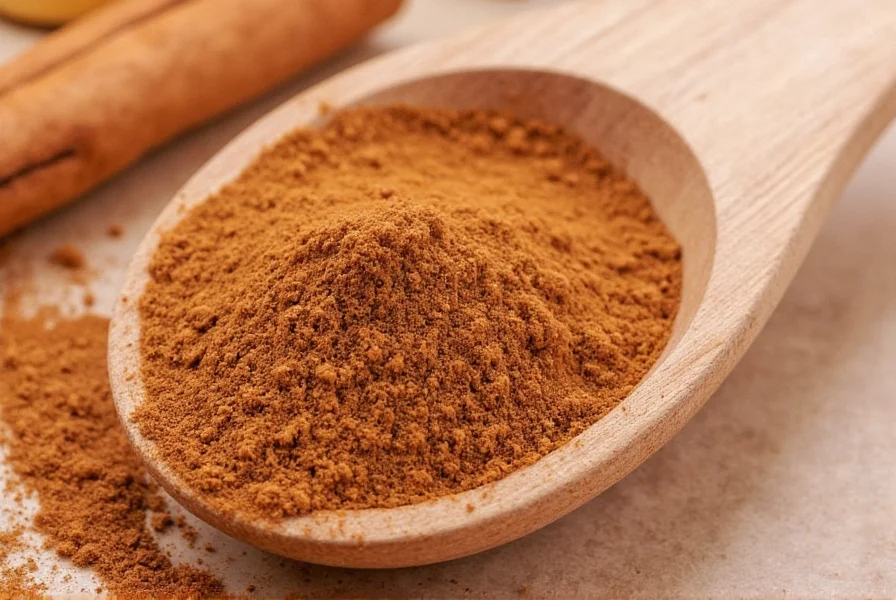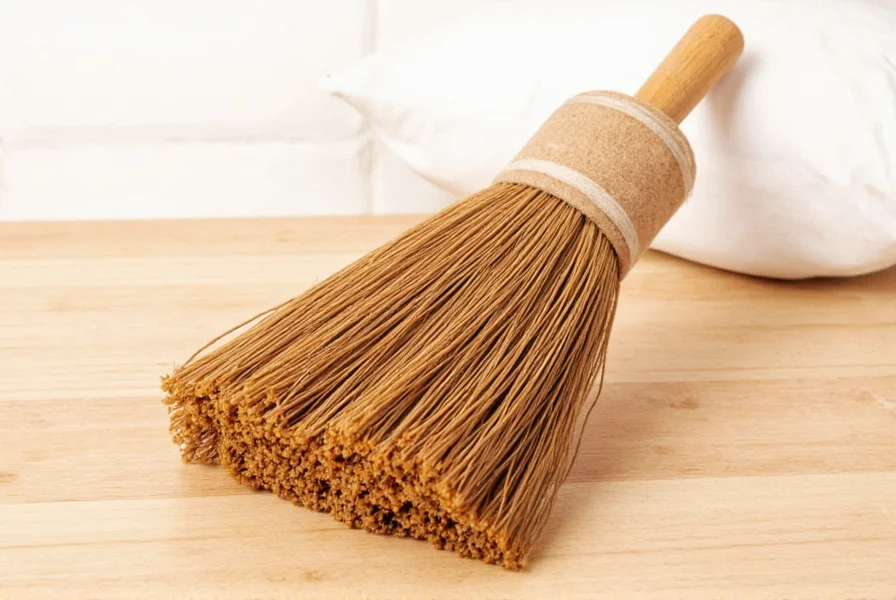For centuries, cinnamon brooms have been valued across multiple cultures for their dual functionality as cleaning tools and natural air fresheners. These distinctive implements combine the practical design of a traditional broom with the aromatic properties of cinnamon bark, creating a multi-sensory household item that serves both utilitarian and ceremonial roles.
The Historical Roots of Cinnamon Brooms
Cinnamon brooms trace their origins to early American colonial traditions, particularly among Pennsylvania Dutch communities, where they evolved from practical household necessities into meaningful cultural symbols. These communities incorporated cinnamon's natural properties into daily life, recognizing its insect-repelling qualities and pleasant aroma long before modern science confirmed cinnamon's antimicrobial properties.
Historical records show that cinnamon brooms became especially popular during the 19th century as trade routes made cinnamon more accessible. Craftsmen would carefully select cinnamon sticks of uniform length and thickness, then bind them tightly with natural twine to create durable, functional brooms that doubled as decorative items when not in use.
Practical Applications and Benefits
Modern users continue to appreciate cinnamon brooms for several practical reasons. The natural oils in cinnamon bark release a warm, inviting scent when the broom is used for light sweeping tasks or simply displayed in living spaces. Unlike synthetic air fresheners, cinnamon provides a natural fragrance without artificial chemicals.
| Benefit | Natural Mechanism | Practical Application |
|---|---|---|
| Air purification | Cinnamaldehyde compounds | Natural odor elimination in kitchens and living spaces |
| Insect repellent | Cinnamon's strong aroma | Deters ants and other household pests naturally |
| Antimicrobial properties | Naturally occurring oils | Helps reduce airborne bacteria in living spaces |
Many homeowners place cinnamon brooms near entryways as both a decorative element and a practical measure to freshen the air when guests arrive. The gentle sweeping motion releases additional fragrance, making it particularly useful in spaces where chemical cleaners might be undesirable, such as kitchens or children's areas.

Creating Your Own Cinnamon Broom: A Step-by-Step Guide
Making a cinnamon broom requires minimal materials but yields impressive results. This DIY project connects modern users with historical craftsmanship while producing a functional household item.
Materials needed:
- 25-30 cinnamon sticks (approximately 6-8 inches long)
- Natural jute twine (1/8 inch thickness)
- Scissors
- Ruler or measuring tape
- Optional: dried flowers or additional botanicals for decoration
Construction process:
- Sort cinnamon sticks by length and thickness for uniform appearance
- Bundle sticks together with the ends aligned
- Wrap twine tightly around the bundle 1.5 inches from the top
- Weave additional sticks radially around the perimeter for fullness
- Secure with multiple wraps of twine and a finishing knot
- Trim bottom ends evenly for proper sweeping function
For those interested in how to make cinnamon broom decorations, consider adding dried lavender sprigs or small pine cones between the cinnamon sticks before final binding. This enhances both visual appeal and aromatic complexity while maintaining the broom's functionality.
Cultural Significance Across Traditions
Beyond practical applications, cinnamon brooms hold symbolic meaning in various cultural practices. In some folk traditions, hanging a cinnamon broom by the door signifies hospitality and welcome, while in others it represents protection and purification of the home space.
The practice of using cinnamon brooms for air purification extends beyond mere fragrance. Many cultures historically associated cinnamon's warming properties with驱邪 (evil spirit repelling) qualities, making these brooms part of seasonal cleansing rituals. Contemporary users often incorporate cinnamon brooms into autumn and winter home decor for their nostalgic scent and traditional associations with warmth and comfort.

Maintenance and Longevity Tips
Proper care extends the life and effectiveness of your cinnamon broom. Unlike standard brooms, these aromatic tools require specific maintenance to preserve their fragrance and structural integrity.
Store your cinnamon broom in a cool, dry place away from direct sunlight, which can cause the cinnamon to fade and become brittle. When not in use, hang it vertically to maintain its shape. For maximum scent longevity, gently rub the sticks together occasionally to release fresh oils. Most well-maintained cinnamon brooms retain their fragrance for 6-12 months before needing replacement.
Understanding the proper care for cinnamon broom decorations ensures they remain both functional and beautiful. Avoid exposing them to moisture, as damp conditions can cause the cinnamon to mold and the binding to weaken.
Modern Applications in Contemporary Homes
Today's homeowners discover innovative ways to incorporate cinnamon brooms into their living spaces. Beyond traditional sweeping duties, many use them as:
- Seasonal home decor elements that provide natural fragrance
- Gift items for housewarmings or hostess presents
- Photography props for lifestyle and food content
- Wedding decor elements symbolizing a sweet home
- Alternative to chemical air fresheners in sensitive environments
The growing interest in natural home solutions has renewed appreciation for traditional cinnamon broom uses in modern contexts. As more people seek chemical-free alternatives for household needs, these simple yet effective tools continue to find relevance in contemporary living.
Frequently Asked Questions
Can cinnamon brooms actually repel insects?
Yes, cinnamon brooms can help repel certain insects. The strong scent of cinnamon acts as a natural deterrent for ants, cockroaches, and some other household pests. While not as potent as commercial insecticides, placing a cinnamon broom near entry points can create a natural barrier that discourages insects from entering your home.
How long does the scent last in a cinnamon broom?
A well-made cinnamon broom typically retains its strong fragrance for 6-12 months, depending on storage conditions. The scent gradually diminishes over time but can be refreshed by gently rubbing the sticks together to release the essential oils. Keeping the broom in a cool, dry place away from direct sunlight helps preserve the aroma longer.
Are cinnamon brooms safe to use around pets?
Cinnamon brooms are generally safe for use around most pets when used as decorative items or for light sweeping. However, avoid vigorous sweeping that might break cinnamon sticks into small pieces, as ingesting large amounts of cinnamon can be harmful to some animals. The scent itself is not typically problematic, but monitor your pets' reactions when introducing any new aromatic element to your home.
Can I use a cinnamon broom for actual cleaning tasks?
Yes, but with limitations. Cinnamon brooms work well for light dusting and sweeping of dry debris on hard surfaces. They're particularly effective for decorative areas like mantels, shelves, or window sills where their fragrance adds value. However, they're not designed for heavy-duty cleaning or wet messes, as moisture can damage the cinnamon sticks and binding.
What's the difference between a cinnamon broom and a regular decorative broom?
The primary difference is the material and purpose. Cinnamon brooms specifically use cinnamon sticks as the bristle material, providing both visual appeal and aromatic benefits. Regular decorative brooms might use straw, twigs, or synthetic materials without the distinctive cinnamon fragrance. Cinnamon brooms offer the dual function of decoration plus natural air freshening, while most decorative brooms serve purely aesthetic purposes.











 浙公网安备
33010002000092号
浙公网安备
33010002000092号 浙B2-20120091-4
浙B2-20120091-4